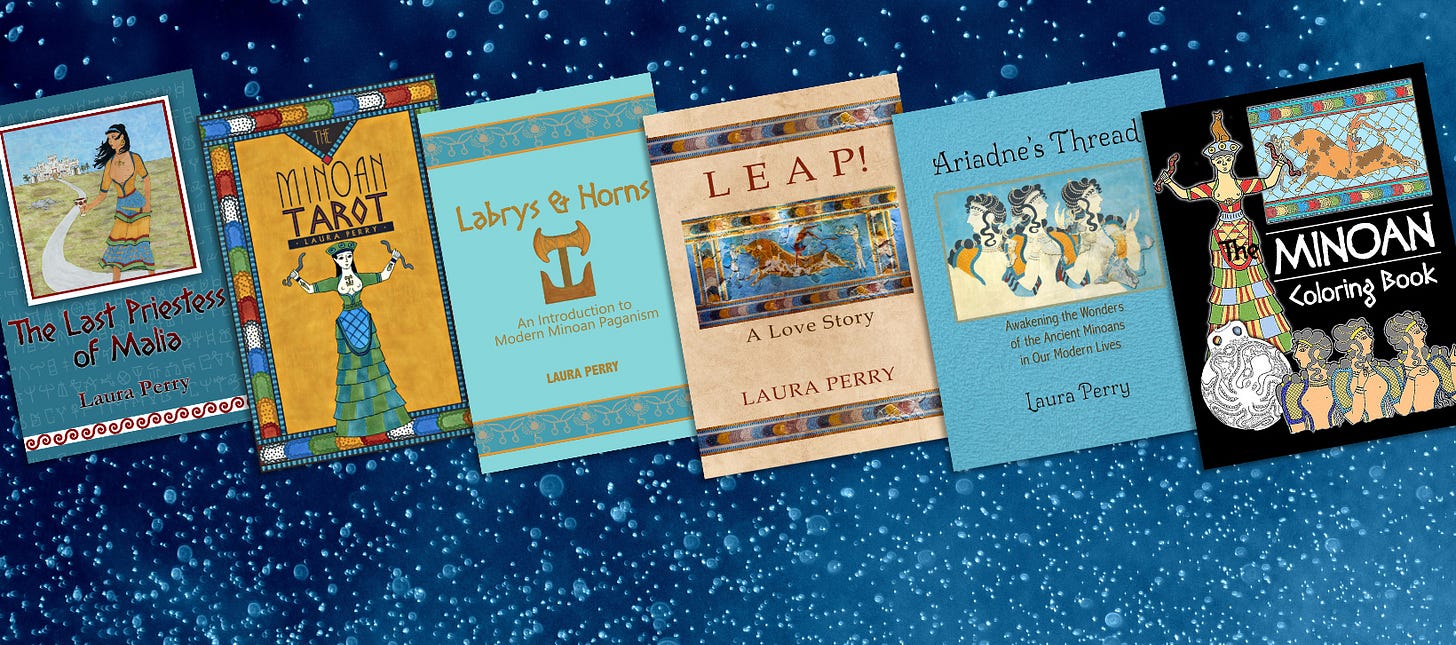A little nudge, nudge, wink, wink in ancient art
It's funny what you find when you go looking for it
Most people who have heard of the ancient Minoans are familiar with the “all the boobs” aspect of Minoan art: those infamous Snake Goddess figurines and frescoed priestesses with their open-front shirts.
This aspect of Minoan art led to my all-time most visited blog post over on the Minoan Path blog.
There’s a lot of feminine imagery in Minoan art and religion. That’s a big part of the attraction for many people.
But it can lead to misconceptions about Minoan religion and culture.
For instance, a lot of people think the Minoans had only one goddess, a sort of primitive “feminine monotheism.” That’s not the case at all.
The Minoans were polytheists: They worshiped many deities of all genders.
That includes male gods.
There’s so much feminine stuff right in our faces in Minoan art, but there’s also masculine stuff: gods as well as goddesses.
There is actually quite a lot of masculine imagery in Minoan art. But because we’re so used to seeing very small numbers of women compared to men in media (the Smurfette principle), when we see roughly equal numbers of women and men, it can feel like the women predominate just because it’s different from the balance (imbalance) we’re used to seeing.
I even went to the effort of counting human figures in Minoan art, and it turns out the male and female representations are roughly equal. That blog post used the art from a book, but I now have over 2000 photos of Minoan art and artifacts in my archives, and the fifty-fifty split still holds.
Some of those “men” in the art are actually gods, and others are priests or lay people.
But what about masculine imagery? Symbolism?
Lilies are very much a feminine/goddess symbol in Minoan art. Where is their masculine counterpart?
Found it!
Have a look at this blog post for all the juicy details: Minoan Ivy: Lily’s Other Half
The wink-wink-nudge-nudge aspect becomes obvious when you find out exactly which masculine bits the ivy symbolizes.
Ivy continued - continues, even - to be a masculine symbol in some quarters. In addition to the racy Etruscan vase I mention in the blog post linked above, my dear friend and fellow board member Dana Corby reminded me that there’s the Christmas carol “The Holly and the Ivy.”
Some symbols just refuse to wither.
My Substack is free, but if you’d like to support my work, you can find my books here and my art here and here.
About Laura Perry
I'm an author, artist, and creator who works magic with words, paint, ink, music, textiles, and herbs. I'm the founder and Temple Mom of Ariadne's Tribe, a worldwide inclusive Minoan spiritual tradition. My spiritual practice also includes spirit work and herbalism through the lens of lifelong animism. I write Pagan / polytheist non-fiction and fiction across several different subjects and genres. I'm currently working on an illustrated book of modern Minoan myths and a Minoan entry in the Moon Books Pantheons series. I’m also an avid gardener and living history demonstrator.







I love this perfectly sized essay and it's interesting points. It leads me to say "I didn't know that!" and be grateful for new learning. The image is captivating and I'd be happy to learn more. Thank you.
You are always able to stimulate my curiosity. Thank you.